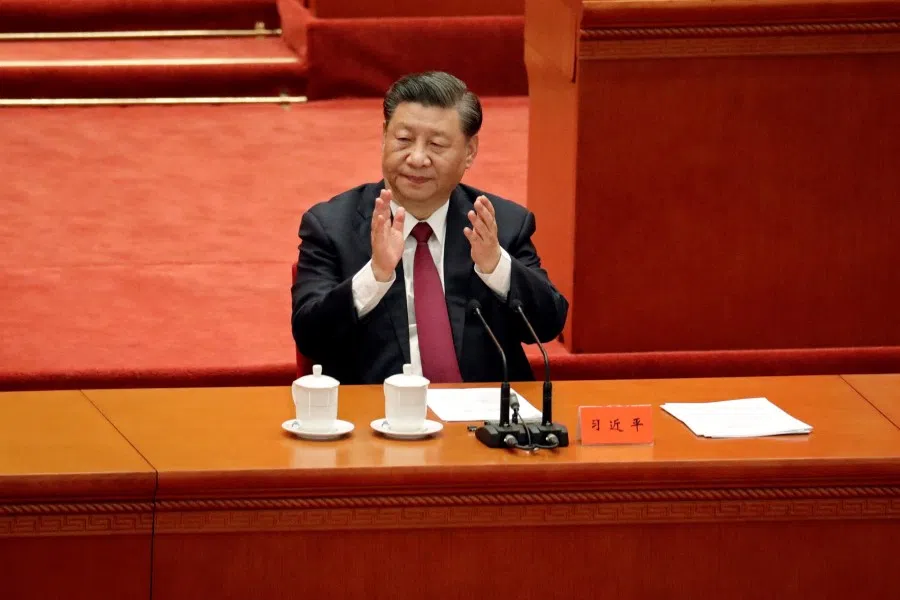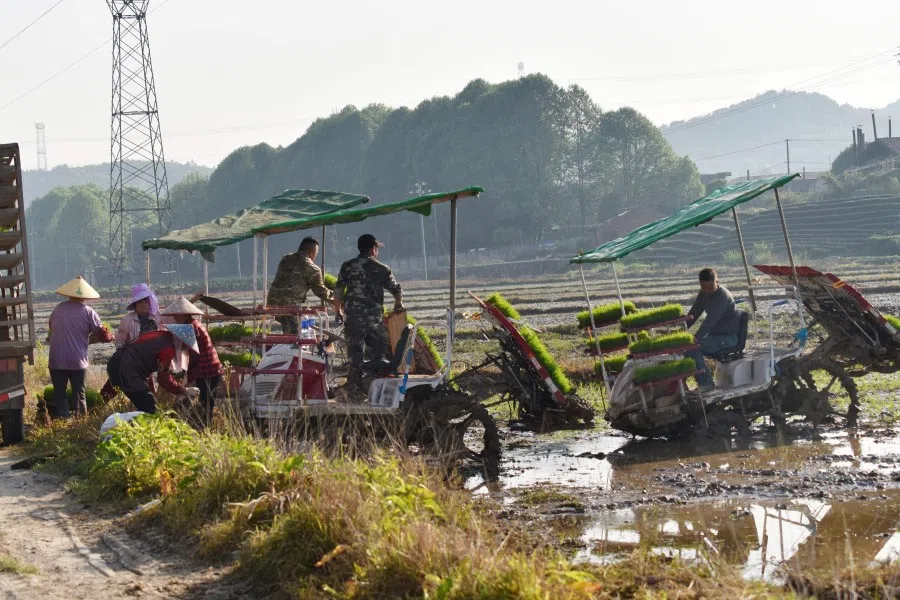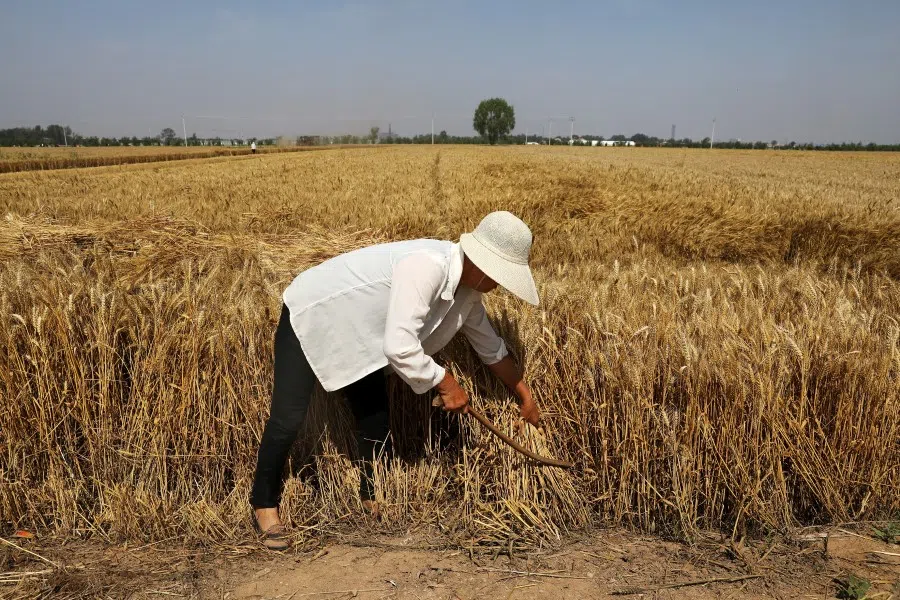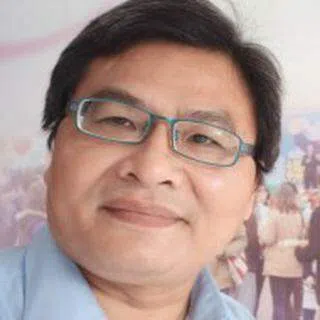It is debatable whether China has truly alleviated poverty
Chinese President Xi Jinping announced in February 2021 China's complete victory in its fight against poverty. While China's poverty alleviation efforts spanned 40 years since its reform and opening up in 1978, its definition of its poverty standards has been ill-defined. Taiwan academic Liu Chin-tsai believes that there is more to be scrutinised before China becomes a global model for poverty alleviation.

In April this year, China's Ministry of Finance, the Research Development Centre of the State Council and the World Bank published a report entitled "Four Decades of Poverty Reduction in China: Drivers, Insights for the World, and the Way Ahead".
The joint study found that based on the 2010 poverty standard (2,300 RMB/year in 2010), China's poverty rate in rural areas fell from 97.5% to 0.6% of its rural population between 1978 and 2019. This translates to 765 million fewer poor people among its rural population, or an average annual decline of 2.4 percentage points.
Real data and achievements?
After Xi Jinping became president at the 18th National Congress of the Communist Party of China (CPC), he made poverty alleviation a key priority and baseline target for "building a moderately prosperous society in all respects". He also announced his push to eradicate rural poverty.
On 6 April 2021, China's State Council published a white paper "Poverty Alleviation: China's Experience and Contribution" summarising the efforts made by the Chinese government to help its poor. The State Council also announced that China had achieved its poverty alleviation targets at the end of 2020, whereby 98.99 million poor rural population were taken out of poverty, and 832 poverty-stricken counties, as well as 128,000 villages, were removed from the poverty list. This was the first time that China has eradicated extreme poverty.
So, is China really a role model in poverty alleviation for the rest of the world? Or, is the declaration of victory against poverty more about appearance than substance?
... competition - be it in economic growth or delivery of public services - among local officials often degenerates into one-upmanship, with the faking of data and achievements occurring from time to time.
In the country, local government officials work in a pressure cooker environment, with the higher levels of government setting targets and drawing up responsibilities. The performance indicators and tasks then cascade down to the lower levels of government for implementation.

Furthermore, local government officials in China face intense competition to rise above their peers. Instead of being directly elected by the public they serve, they are chosen after being appraised by the upper levels of government. With promotion depending on good performance, which in turn depends on good numbers, it is no wonder that competition - be it in economic growth or delivery of public services - among local officials often degenerates into one-upmanship, with the faking of data and achievements occurring from time to time.
Poverty alleviation strategy
First, there is controversy over whether China's targeted poverty alleviation strategy can serve as a guide for the rest of the world. The World Bank defines extreme poverty as living on less than US$1.90 per day. Based on this measure, China's poverty rate dropped from 88.1% in 1981 to 0.3% in 2018, or nearly 800 million fewer poor people, accounting for nearly 75% of the global reduction in the number of poor people during that period.
The Chinese government describes its poverty alleviation campaign as the biggest and most intense battle in the history of mankind, benefiting the greatest number of people. China's accelerated development and economic transformation were synchronised with its large-scale reduction in poverty and eradication of extreme poverty. These achievements constantly increased the public's sense of satisfaction, happiness and security, demonstrating their commitment to these values and the pursuit of equality and justice.
China used a rather low standard to measure poverty, so it is debatable whether the country has truly alleviated poverty.

The aforementioned "Four Decades of Poverty Reduction in China" report indicates that China's approach to tackling extreme poverty was based on two pillars: firstly, broad-based economic transformation; secondly, a strategy of targeted support for its poor.
The major characteristics of China's poverty alleviation policies include having party secretaries at all five levels of government (the CPC Central Committee, provincial committee, municipal committee, county-level committee and village committee) closely monitoring poverty alleviation; collaboration between party and nation; and relying on poverty alleviation strategies based on special poverty reduction programmes, poverty reduction by industries and social Involvement in poverty reduction. Riding on its success, the Chinese government claims that the developmental path it took to alleviate poverty is a major contribution towards the global battle against poverty.
A lower standard to measure poverty
Second, China used a rather low standard to measure poverty, so it is debatable whether the country has truly alleviated poverty. On 25 February 2021 at the National Poverty Alleviation Summary and Commendation Conference, Xi declared China's "complete victory" in the fight against poverty at the important juncture of a century since the founding of the CPC after 98.99 million of its rural poor were lifted out of poverty based on current standards.
In fact, the "current standards" Xi mentioned were not clearly defined. According to the China Statistical Yearbook, "current standards" refer to the 2010 poverty line of 2,300 RMB per annum per capita in rural areas. Furthermore, over the past four decades or so, the country's rural poverty line has only been adjusted three times, namely in 1978, 2008 and 2010.
China has long adopted the approach of annually adjusting its base period poverty line, but it failed to do so in both 2015 and 2020 when adjustments were due. If recalibration were carried out based on annual growth rates of 6%, its poverty line would have increased to 4,000 RMB per annum per capita in 2020.
Evidently, China's poverty threshold is set too low. Its standard income of US$1.73 per person per day in 2020 is much lower than the World Bank's standard income of US$1.90 to measure extreme poverty. Moreover, the World Bank has different poverty lines for low- and middle-income countries. In 2015, the World Bank's poverty line for low-income countries was set at US$1.90 per person per day, and in 2020 poverty lines for lower-middle and upper-middle-income countries were set at US$3.20 and US$5.50 per person per day respectively.
If it were to adopt the international poverty standard of US$5.50 per person per day for upper-middle-income countries, China would have 223 million poor people, or 7.9% of the global poor, the second highest number in the world after India.

Third, China has been lax with its poverty standards in two aspects to mask the reality of its poor. Firstly, its annual income per capita is in excess of US$10,000, making it an upper-middle-income country. If it were to adopt the international poverty standard of US$5.50 per person per day for upper-middle-income countries, China would have 223 million poor people, or 7.9% of the global poor, the second highest number in the world after India. Secondly, in both 2015 and 2020, China was supposed to adjust its base period poverty line but did not do so, resulting in a poverty standard that is too low.
These two aspects mean that the living conditions of those who are truly impoverished in China may not be aligned with what is expected in a country that has "complete victory" over extreme poverty.
Slowing annual growth rates in rural China's disposable incomes
Fourth, even though the income of those living in rural areas grew under Xi's leadership, the growth rate was lower than when former president Hu Jintao was in charge. In the 18 years since the Central Committee of the CPC started publishing its annual "No. 1 document", the disposable income per capita of those living in rural China grew from 3,027 RMB to 17,131 RMB. The annual growth rate in disposable income per capita of 11.5% enjoyed by those living in rural areas is higher than the 10% annual growth rate of their urban counterparts.
In 2013, the concept of targeted poverty alleviation was rolled out to improve the poverty alleviation workflow, and in 2015 the National Conference on Development-driven Poverty Alleviation was held. At the 19th National Congress in 2017, targeted poverty alleviation was made one of the "three tough battles" (三大攻坚战) that China faced. Since the 18th National Congress, some ten million Chinese have been lifted out of poverty each year.
From 2004 to 2012 while Hu was president, the disposable income per capita of those living in rural China grew at an annual rate of 13.6%, increasing from 3,207 RMB to 8,389 RMB. After Xi succeeded Hu, this growth rate fell to only 9.4% between 2013 and 2020, increasing from 9,430 RMB to 17,131 RMB. The rural Chinese enjoyed higher annual growth rates in their disposable incomes during Hu's presidency compared the growth rates during Xi's leadership.
Even though the inequality between rural and urban China and its Gini coefficient have gradually decreased, both are still considered high according to UN standards.

Even though the inequality between rural and urban China and its Gini coefficient have gradually decreased, both are still considered high according to UN standards. Other than Shanxi, the rural Gini coefficients in the rest of China's agricultural provinces have yet to come down.
While people in rural China have seen their incomes rise, there is still a yawning gap between the poor and the rich, and social inequality has not been effectively addressed. In 2019, China's Gini coefficient was 0.46, marking considerably high wealth inequality according to UN standards. Hence, the Chinese government's vague definition of poverty, its use of a more forgiving poverty standard, and the country's high Gini coefficient mean that its declaration of a complete victory in the fight against poverty needs to be further scrutinised.
Related: Chinese researcher: This is how China gets rid of poverty | Lifting 'the poorest of the poor' out of poverty in Sichuan: Does poverty alleviation mean uprooting people from their homes? | Persistent poverty and a weak middle class: China's fundamental challenge | An apple tree in Shaanxi tells a story: China's quest to eradicate rural poverty | China is far from being affluent | China is now 'a moderately affluent society'? | Only 17 people left in poverty





![[Big read] China’s 10 trillion RMB debt clean-up falls short](https://cassette.sphdigital.com.sg/image/thinkchina/d08cfc72b13782693c25f2fcbf886fa7673723efca260881e7086211b082e66c)